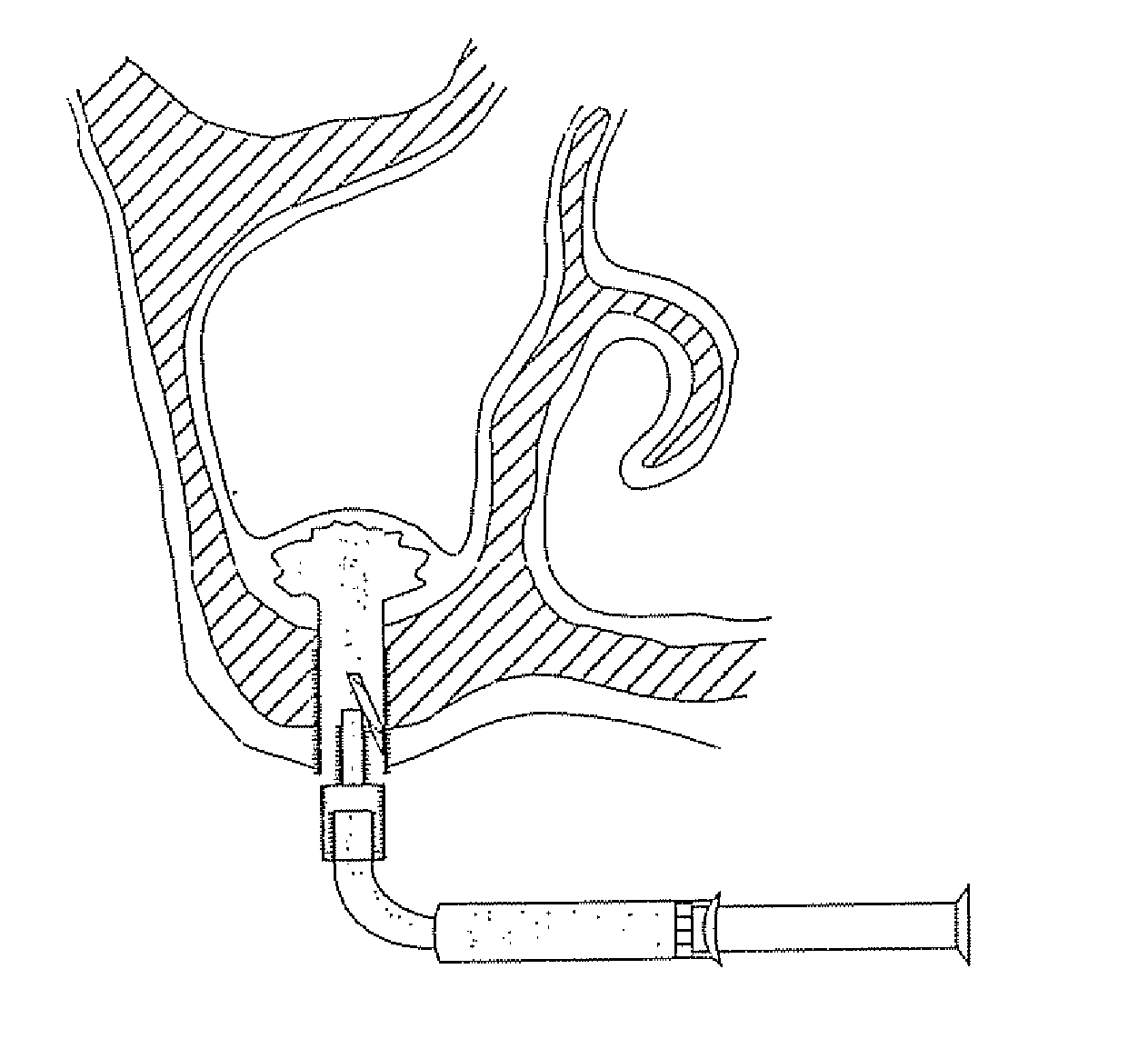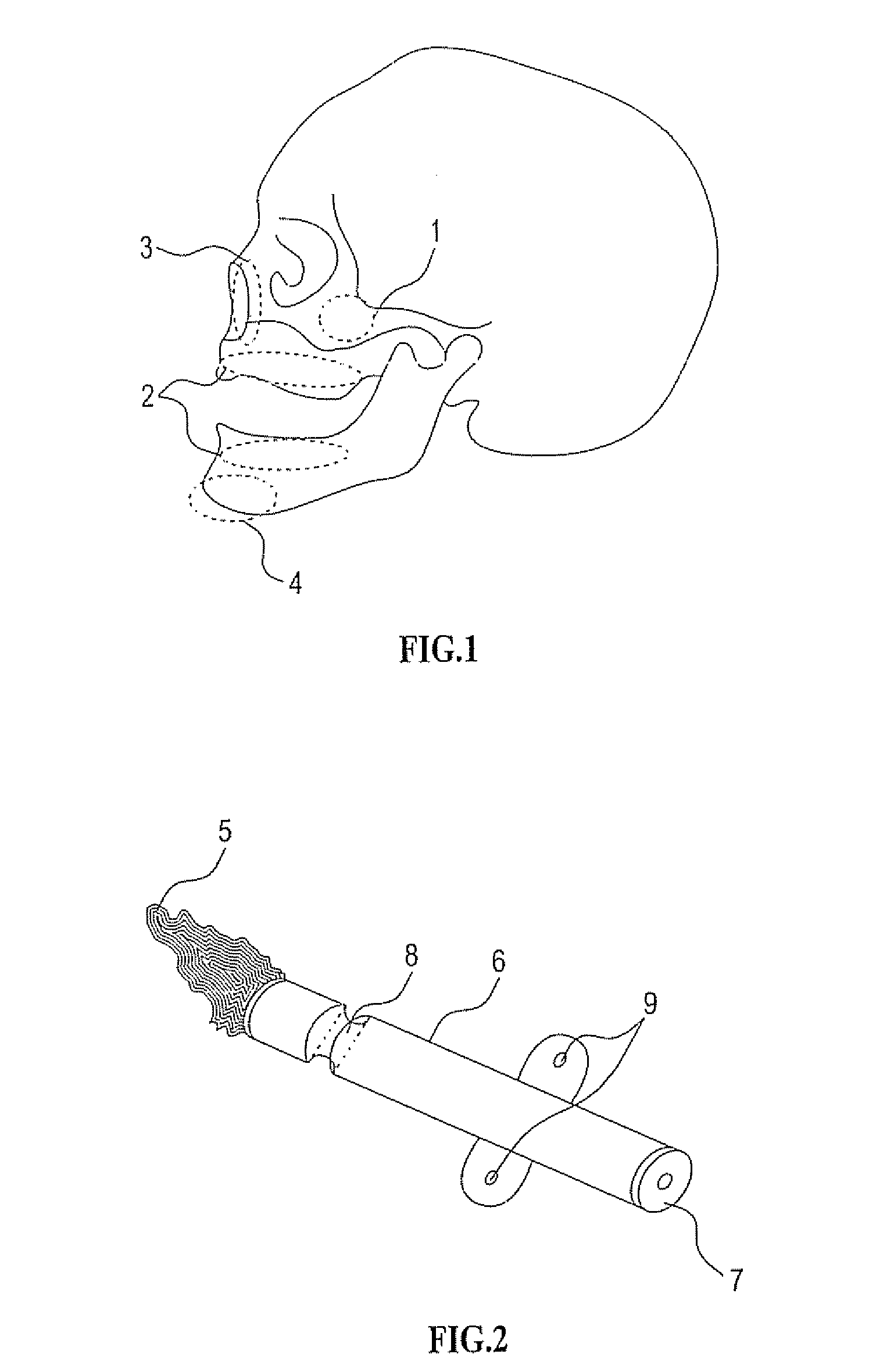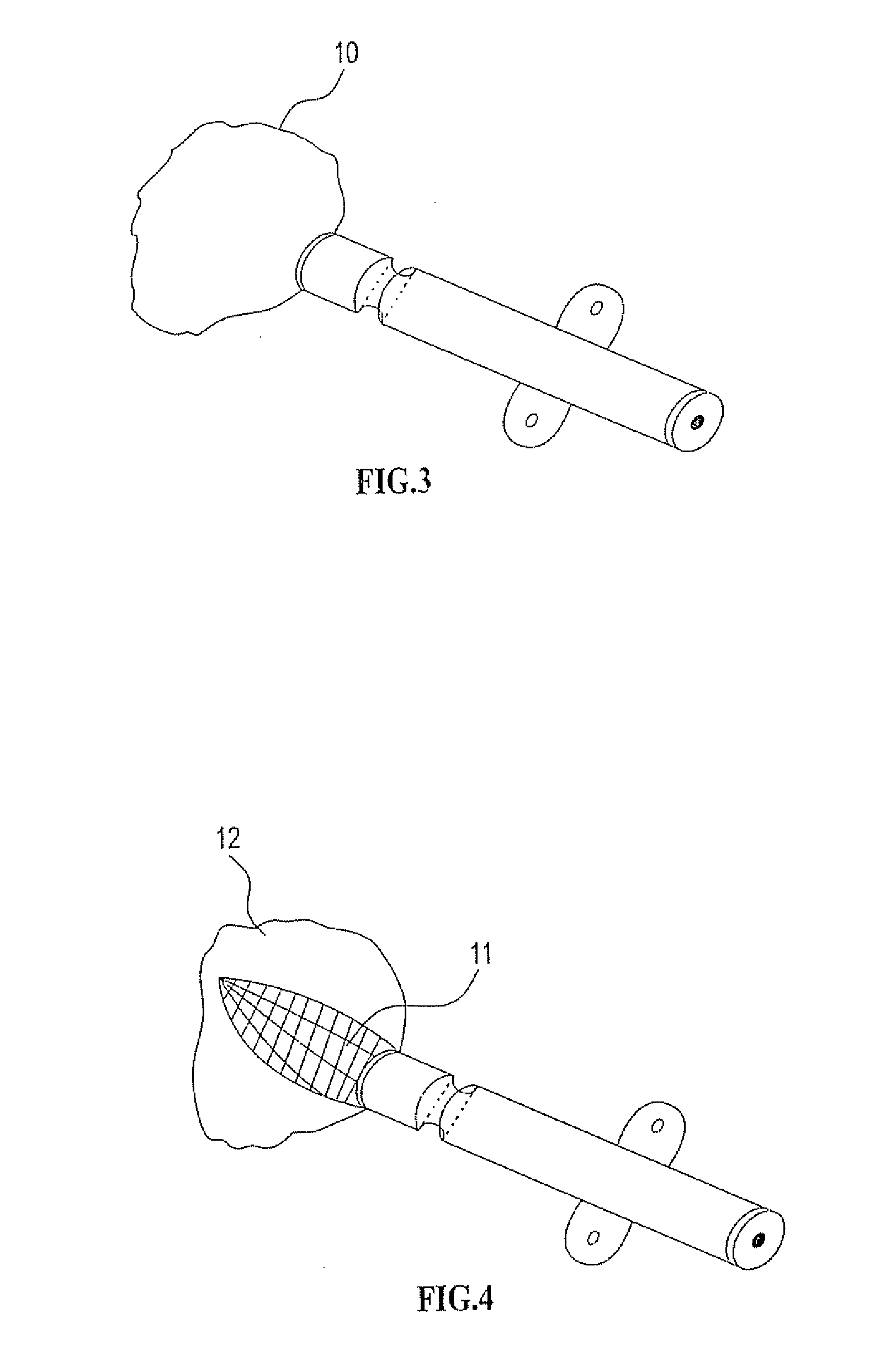Bioresorbable Inflatable Devices, Incision Tool And Method For Tissue Expansion And Tissue Regeneration
a bioresorbable, inflatable technology, applied in medical devices, diagnostics, applications, etc., can solve the problems of inability to receive bridges, implants, dentures, and other problems, and achieve the effect of reducing the change in the shape of the inflatable elemen
- Summary
- Abstract
- Description
- Claims
- Application Information
AI Technical Summary
Benefits of technology
Problems solved by technology
Method used
Image
Examples
Embodiment Construction
[0310] As mentioned further above there are many implementations of the invention in different tissues and organs. The following description will focus on embodiments in three fields in order to understand the principles of the device and method. The first is bone augmentation in the jaws the second is vessel widening using a bioresorbable stent, the third is fixating bone fragments. The same principles should be used in other tissues and organs.
[0311] Before turning to the features of the present invention in more detail, it will be useful to clarify certain terminology as will be used herein in the description and claims. Specifically, it should be noted that the present invention is useful in a wide range of applications in which living tissue is to be expanded, stretched or displaced. The term “living tissue” is used herein to refer to any living tissue including, but not limited to, an organ, tube, vessel, cavity, bone cavity or membrane, and interfaces between any two or more...
PUM
| Property | Measurement | Unit |
|---|---|---|
| width | aaaaa | aaaaa |
| height | aaaaa | aaaaa |
| depth | aaaaa | aaaaa |
Abstract
Description
Claims
Application Information
 Login to View More
Login to View More - R&D
- Intellectual Property
- Life Sciences
- Materials
- Tech Scout
- Unparalleled Data Quality
- Higher Quality Content
- 60% Fewer Hallucinations
Browse by: Latest US Patents, China's latest patents, Technical Efficacy Thesaurus, Application Domain, Technology Topic, Popular Technical Reports.
© 2025 PatSnap. All rights reserved.Legal|Privacy policy|Modern Slavery Act Transparency Statement|Sitemap|About US| Contact US: help@patsnap.com



